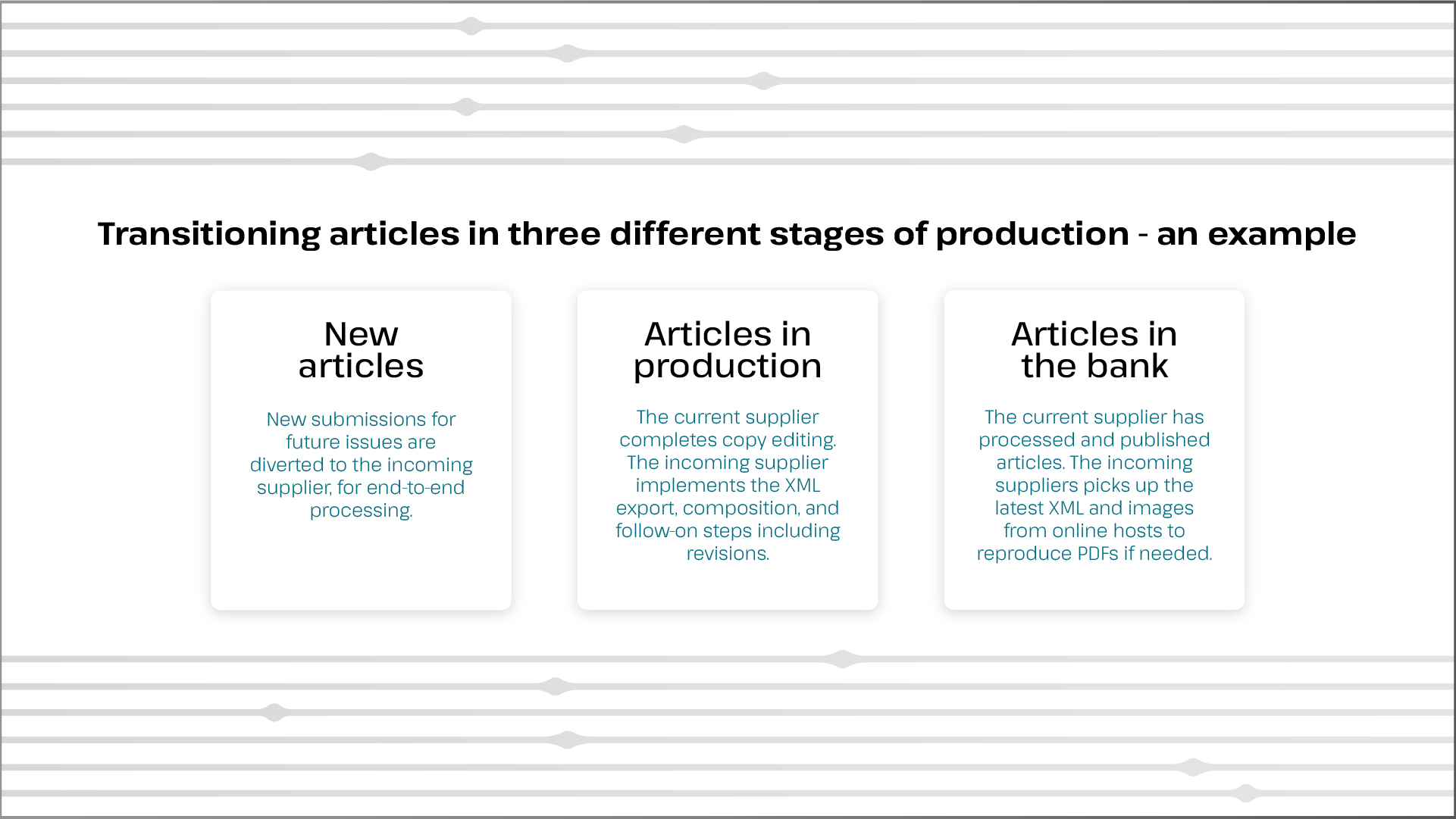
In a constantly evolving industry, publishers need to stay ahead of the curve – whether that’s to scale operations, innovate processes, improve quality, or speed up time-to-publish, all while optimising content production and processing costs. Common reasons why publishers look to move suppliers include:
The word transition may seem daunting and cause understandable anxiety. With diligent planning, a strategic approach, and the right partner, the switch can be a smooth and successful endeavour for publishers.
Every organisation is unique, so an upfront understanding of the objectives of transition and why the change is required will help publishers, suppliers, and key stakeholders find valuable common ground.
A well-defined strategic approach to transition that considers the needs of all stakeholders is key to navigating change. While flexibility is required, a strategy that is changing every few weeks is a recipe for disaster, with downstream ripple effects.
Here’s our 5-point approach for publishers to consider, to help facilitate a smooth service transition.
When transitioning production processes, we have found open, deliberate, and transparent communication to be the most crucial element. Every stakeholder needs to be at the table, with the outgoing and incoming suppliers collaborating with the publisher’s internal teams (production, editorial, content, digital, design, procurement, accounting, third-party teams). A well-managed transition will ensure all key stakeholders understand overlaps and dependencies, and are then able to plan accordingly. Every effort has to be made for an effective and comprehensive knowledge transfer to clear expectations and clarify concerns upfront.
Having a team of people who can appreciate different cultures is another critical point to move work from one supplier to a new one.
A well-thought-out implementation plan has built-in contingency plans for scenarios in which timelines are not achieved due to risks or dependencies. A transition typically involves integrating with third party systems (submission, print hosting platforms etc.), the publisher’s internal systems, and workflow systems to manage end-to-end processes. Building out flexibilities in implementation plans that include backup options, multiple integration mechanisms, defining baseline service levels during the cutover, helps manage risks and delays, and to be prepared for surprises.
Articles that are transitioned to a new supplier, are typically in three different stages of production. A cut-off must be planned to transition the work from the outgoing supplier to the incoming one depending on the publisher’s article inventory and transition timeline. The distribution of articles in these stages also determines the volume of backlog, and the time it would take to clear the backlog. This can only be determined near the time of transition, based on inputs from the outgoing supplier.

Once the setup is ready, an end-to-end testing should be carried out by simulating article production. Every stage of the process should be tested and all kinks ironed out. We can’t emphasise the importance of this step enough. Getting this right ensures a seamless cutover before going live with your new supplier.
A thorough assessment of how the entire transition process has gone, seeking and analysing feedback from all stakeholders, and documenting learnings, help identify areas for continuous improvement in process, organisation, and communication. Insights gathered are most useful when studied against objectives defined at the beginning of the transition.
Big changes can feel unnerving. But with diligent planning and collaboration, smooth and successful transitions are facilitated all the time. It is also important to recognise that while the entire transition journey poses challenges and risks, it also presents opportunities for publishers to innovate and grow. New partnerships can bring about exciting new process and efficiency gains and access to new technology, thereby enabling new business models and innovations that wouldn’t have been otherwise possible.
A transition is the perfect opportunity to go back to the drawing board to outline what a fresh change can do for your organisation.